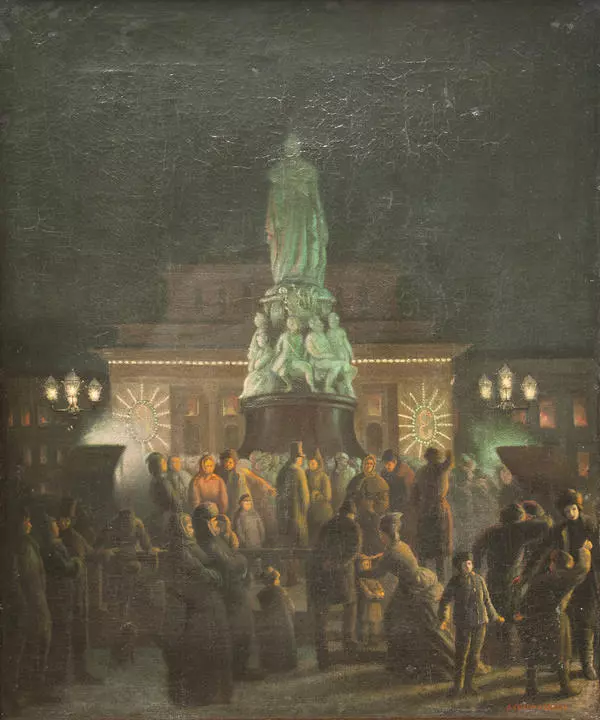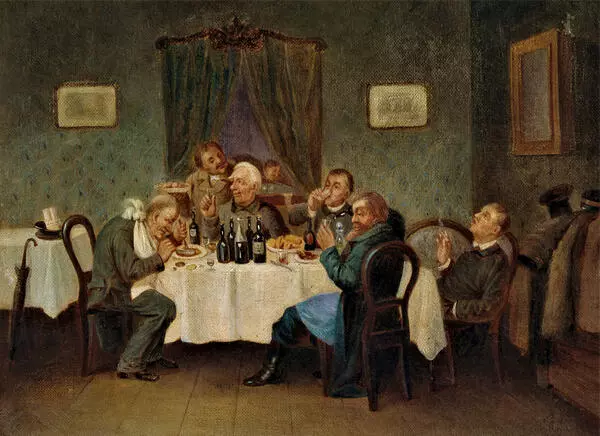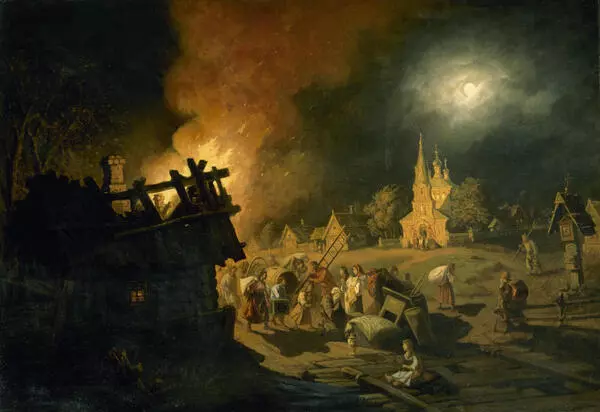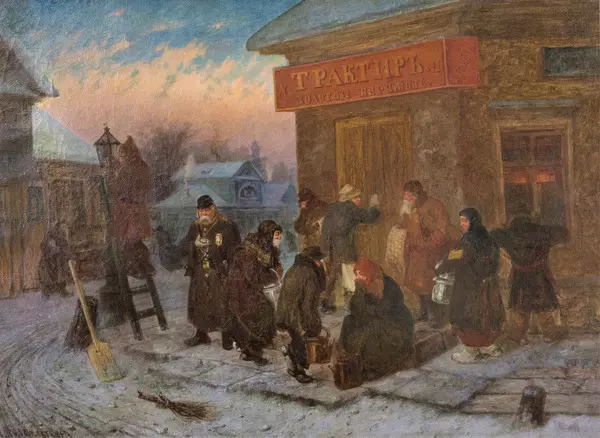The exhibition of the Sevastopol Art Museum named after Mikhail Pavlovich Kroshitsky includes the painting “Lunch” by the Russian artist Leonid Solomatkin.
The grotesque and small size of the characters, their grimaces, emphasized frozen gestures, the carefully thought-out composition, and the distance from the characters help to comprehend the meaning of the scene. This is not a feast but rather a business meeting that has turned into an ordinary drunken party. The artist does not smile at his characters but satirizes and condemns these people who have descended into an animal existence. The painting reveals their spiritual desolation. The techniques of satirical grotesque, caricatured depiction of the feast’s participants, and local colors have a lot in common with the figurative metaphors and exaggerations typical of lubok paintings and traveling shows that Leonid Solomatkin enjoyed greatly. In his art, Solomatkin revealed the degradation of essential virtues in a life where anything can be bought and sold and becomes a profit motive, destroying normal human relations.
In the history of Russian art, Leonid Ivanovich Solomatkin is often referred to as the “forerunner of traveling exhibitions”. In the 1860s, he continued the traditions of Pavel Fedotov’s critical and satirical approach. Leonid Solomatkin started working at the early age of 13 — as a cattle driver, shepherd boy, and oxcart driver. Having traveled extensively throughout Russia, Solomatkin witnessed the devastation of villages, poverty in cities, and the complex and sometimes cruel nature of human relationships. All of this was later reflected in his works.
Leonid Solomatkin’s passion for art likely began with his love for cheap folk books and lubok prints. After graduating from the Moscow School of Painting and Sculpture and studying at the Academy of Arts, he received the title of artist, 3rd class, and turned to the genre of everyday life. Leonid Solomatkin lived in poverty, slept at shelters for the homeless, and mostly painted scenes from the lives of ordinary people. These works quickly resonated with the audience, not only due to their social focus but also due to their artistic value.









